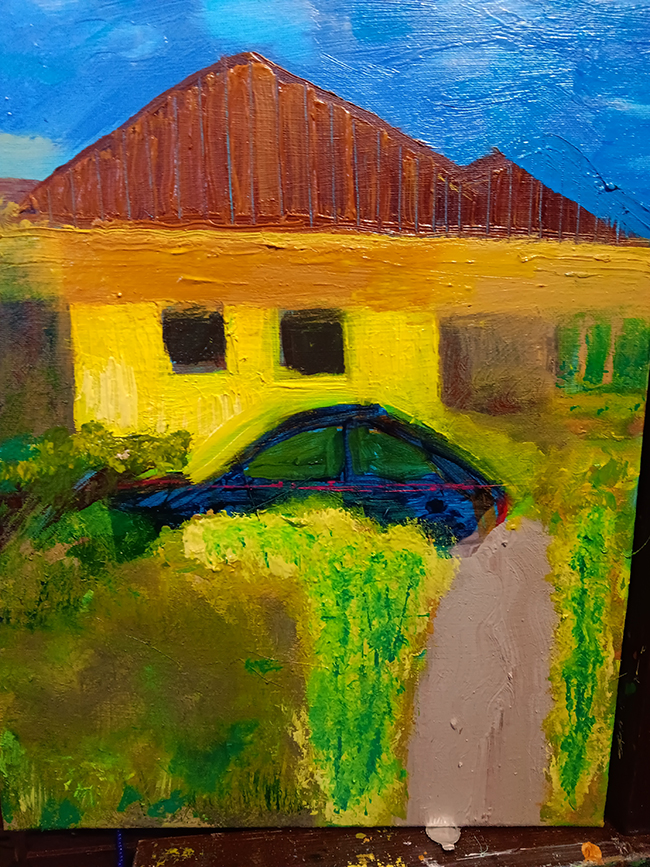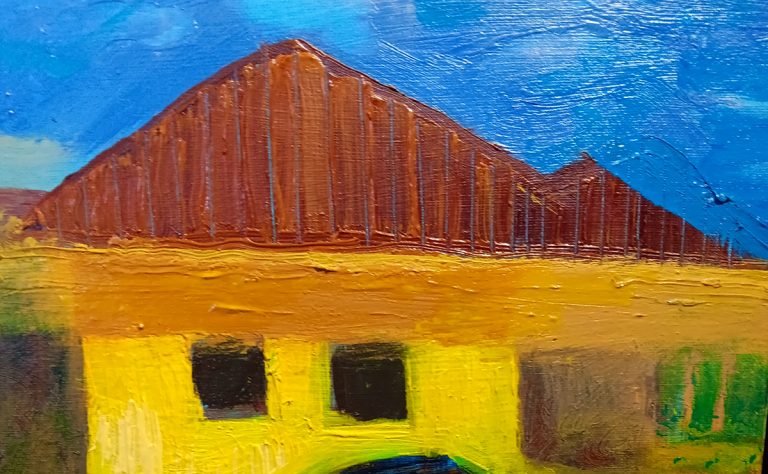Martin Collier, known as Marcol from ArtistAffect, approaches art with a deep fascination for both the creative process and the materials that make it possible. His artistic journey is hands-on and rooted in discovery—he doesn’t just paint; he delves into the very essence of color. When a supplier failed to provide clear information on an order, Collier took matters into his own hands and began crafting his own oil paints from raw pigments. This hands-on experimentation reflects his commitment to understanding every element of his craft.
Collier’s artistic process blends intuition with careful thought. Drawing inspiration from artists like Stefan Bauman, he views painting as a performance—one that needs an audience to truly exist. Yet, at the heart of it all, his passion remains simple: he paints because he loves it. From mixing his own pigments to applying brushstrokes, every step of the process is a source of joy and creative fulfillment.

Looking at Martin Collier’s work, it’s clear that he approaches painting with a raw, almost primal engagement with the medium. His recent piece—an expressive landscape featuring a house, a car, and an overgrown pathway—reveals his fascination with color relationships, texture, and the interplay between structure and nature.
The house, a solid and somewhat imposing structure, is painted in a thick, textural yellow, with dark windows that seem to peer outward. Above it, the roof, rich in earthy browns, sharply contrasts the blue sky. The paint application is bold, layered, and unafraid of imperfection. You can see the movement of the brush, the push of the paint. It doesn’t strive for hyperrealism—it strives for presence.
In front of the house, the car is half-buried in the landscape. Its dark blue body is outlined with quick, energetic strokes, suggesting a vehicle that has been forgotten, swallowed by time and nature. The grass, painted in vibrant greens and yellows, seems to encroach upon the car and the dirt path leading up to the house. The paint is thick, sculptural even, making the foliage feel alive and almost chaotic.
There’s an undeniable mood to this work—one of quiet abandonment, of time passing without care. Yet, it’s not melancholic. The colors are too vivid, too full of energy for that. It feels like a place that continues to exist and breathe, even in solitude.
Material as a Language
One of the most striking aspects of Collier’s work is his use of paint as both a visual and physical element. He doesn’t just paint an image; he constructs it. The surface is textured, sometimes rough, sometimes smooth, always intentional. This comes from his deep understanding of his materials—something that has only intensified since he started making his own pigments.
There’s a noticeable difference in a painting when the artist has a hand in every aspect of its creation. The colors in Collier’s work have a richness, a density, that speaks to their handcrafted origin. It’s not just about mixing a palette—it’s about creating it from the ground up. That involvement shows. The paint doesn’t just sit on the canvas; it interacts with it.
The Joy of the Process
For Martin Collier, painting isn’t just about producing an image—it’s about engaging with the act of creation itself. The way he talks about painting, the way he approaches each piece, reveals a deep love for the process. The frustration that led him to create his own paints wasn’t about control—it was about curiosity, about understanding his materials on a deeper level.
This curiosity extends to his artistic influences. Like Bauman, he understands that art must be seen, but that doesn’t mean his work is made for an audience. It exists because he needs to create it. He paints because he loves to paint. The texture, the movement, the color—these are what drive him. His work is a record of that passion, one brushstroke at a time.

